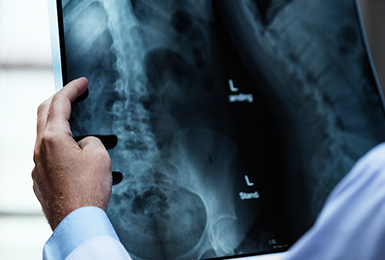The most reliable doctors in Mexico
Evolution of stereotactic navigation in spine surgery at the Naval Hospital, Mexico
Background: The development of stereotactic navigation techniques has been an important advancement in various fields of medicine, as neurosurgery and spine surgery. These techniques, commonly referred to as image-guided surgery (IGS), providing simultaneous, multiplanar views of spinal anatomy during surgery. A surgical navigation system is in some way the same as a commonly used navigation system in a ship, aircraft or even a car. Both attempt to localize or determine a position in space in the context of its surroundings.

Modern surgical navigation systems use a stereoscopic camera emitting infrared light which can determine a 3D position of prominent structures, like reflective marker spheres. This allows for real time tracking of the marker spheres.
Purpose of the study

The purpose is to describe the changes that we have had at the naval hospital in the equipment and methods of stereotactic navigation in spine surgery.
Material & Methods: The medical literature was reviewed and the clinical experience with intraoperative radiography, C-arm fluoroscopy and different types of navigation systems: BrainLab VectorVision Neuronavigation System and Medtronic O-arm Multi-dimensional Surgical Imaging System.
Results & Conclusion
In the first step at the Naval Hospital the spine surgeons used a conventional intraoperative spinal navigation process: radiography or C-arm fluoroscopy, then the surgery was performed with a preoperative CT-based image guidance system, using different types of registration procedure for open surgeries. With this system the surgeon have to select a registration procedure: Paired points: The patient registration begins by selecting a minimum of three to four distinct anatomic points (fiducials) on the reformatted CT images of each level involved in the procedure.

Surface region matching, is a process in which a large number of random points are selected on the exposed surface of the vertebral level of interest. CT-fluoro matching, the aim of doing this is to correlate intraoperatively acquired two-dimensional fluoroscopic images with preoperatively acquired CT images. This process is termed 2D-3D registration. The O-arm system is an isocentric fluoroscope able to automatically rotate around the patient while maintaining the relevant spinal anatomy in its center. With the addition of specialized software, it can function effectively as a computed tomography scanner. The images are then reconstructed to provide axial, coronal, and sagittal views of the anatomy. The stereotactic navigation in spine surgery had advanced rapidly in recent years; it is a useful tool in open surgery and in minimally invasive spine surgery. The complications derived from pedicle screw malposition are one of the main problems of vertebral surgery. The stereotactic navigation allows the spine surgeon to be more accurate and able to minimize complications and surgical operations.
See our product recomendations in our store.
As Amazon affiliates, some purchases may earn us a commission.
See our product recomendations in our store.
As Amazon affiliates, some purchases may earn us a commission.
Doctor’s profile
| Other locations |
|---|
| Guadalajara |
| México City |
| Oaxaca |
| Tijuana |


